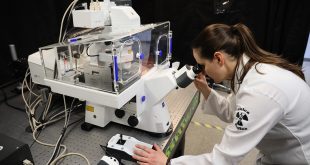Increasing numbers of Canadian research and academic centres are collaborating with Indigenous communities, to everyone’s benefit. Here are seven Indigenous initiatives that are making a difference.
Research Hub at the University of Alberta
At the University of Alberta, attended by some 1,300 Indigenous students each year, you’ll find North America’s only Faculty of Native Studies. The Indigenous Science, Technology, and Society (ISTS) program is an international research and teaching hub, with a mission to build scientific literacy by training graduate students, postdoctoral and community fellows to grapple with techno-scientific projects and topics that affect their territories, peoples, economies and institutions. It’s also committed to producing research to inform national, global and Indigenous thought and policymaking in science and technology.
Funding agencies team up for equity, diversity and inclusivity
In January 2020, three funding agencies – the Canadian Institutes of Health Research, the Natural Sciences and Engineering Research Council of Canada (NSERC) and the Social Sciences and Humanities Research Council –
launched an Indigenous strategic plan, “Setting new directions to support Indigenous research and research training in Canada,” which aims to ensure equity, diversity, and inclusion are considered in decision-making on research priorities, funding and grants, while building respectful research interactions.
“Of course, it will take more than our commitment to produce a deeper change and achieve a truly inclusive culture; it will take collective action across the research ecosystem,” explains Alejandro Adem, president of NSERC and chair of the Canada Research Coordinating Committee. “Whether we are conducting research, studying at a post-secondary institution, developing policies or administering programs, we all have an important role to play in ensuring that Canada’s research system supports and values participation by all.”
A First Nations data governance strategy
Last year, the First Nations Information Governance Centre (FNIGC) released a new national strategy on First Nation data sovereignty. “A First Nations Data Governance Strategy” envisions an Indigenous‑led, national network of regional information governance centres for the information needs of First Nations people and communities.
“This matters to Canada because – like all governments – First Nations governments cannot be successful if their rights to self-determination and self-governance are not empowered by the governance of their own data,” says Gwen Phillips, FNIGC board member and data governance champion for B.C.
In 1998, the centre introduced The First Nations Principles of OCAP (ownership, control, access and possession), which set out how First Nations’ data and information will be collected, protected, used or shared on their territory.
The Peace–Athabasca Delta Institute
In Alberta, the communities of the Peace–Athabasca Delta region (Mikisew Cree and Athabasca Chipewyan First Nations, Fort Chipewyan Métis Association) see themselves as stewards of the delta and its ecosystem, and were a driving force in pushing for the designation of Wood Buffalo National Park as a UNESCO World Heritage site.
The delta is considered a sacred place for the Athabasca Chipewyan First Nation and the Fort Chipewyan Métis; it’s also an ecologically significant area that attracts armies of researchers. Now the group is working with local universities to establish the Peace–Athabasca Delta Institute as a place where Western and Indigenous research in the delta can work collaboratively.
Indigenous communities help expand knowledge for the Canadian Forest Service
The Laurentian Forestry Centre (LFC) is one of six research centres within the Canadian Forest Service which works mainly on forested land, areas that are populated by more than 70 percent of Canada’s Indigenous people. In 2019, LFC teamed up with Laval University, to set out best practices and identify tools for conducting collaborative research with Indigenous peoples. Together with researchers and members of the Pessamit First Nation, they compiled a guide for working with Indigenous communities.
The guide, “Initiative for Knowledge Co-creation in Collaboration with Indigenous Communities,” examines aspects of research processes, including first contact with the communities, formulating the research questions, identifying research objectives, collecting and analyzing data, and publishing results – all guided by the principles of ownership, control, access and possession.
Inuit research strategy supports studies into water, land and ice
The Inuit Tapiriit Kanatami (ITK), a national Inuit advocacy group, unveiled its National Inuit Strategy on Research in 2011, aimed at building partnerships with governments and research institutions that support studies in Inuit Nunangat, the Inuit homeland in Canada, which encompasses the regions of Nunavut, Nunavik in Northern Quebec, Nunatsiavut in Northern Labrador and the Inuvialuit Settlement Region of the Northwest Territories.
Last year, the group introduced the Inuit Nunangat Research Program, an Inuit-led initiative aimed at Inuit self-determination in research by supporting Inuit-designed projects and partnerships.
New Inuit Nunangat university planned
This past June, the ITK and the Mastercard Foundation announced plans for an Inuit Nunangat university, designed with Inuit customs and values in mind.
“The support of the Mastercard Foundation will allow Inuit the space, time and resources to determine how best to lead and plan for a new reality of higher education in Inuit Nunangat,” said Natan Obed, president of ITK. The initiative will engage Inuit, regional leaders, educators, youth and experts over the next two years, as well as consult with Indigenous educators, education program development partners and research experts within Inuit Nunangat and internationally.
 BioLab Business Magazine Together, we reach farther into the Canadian Science community
BioLab Business Magazine Together, we reach farther into the Canadian Science community





